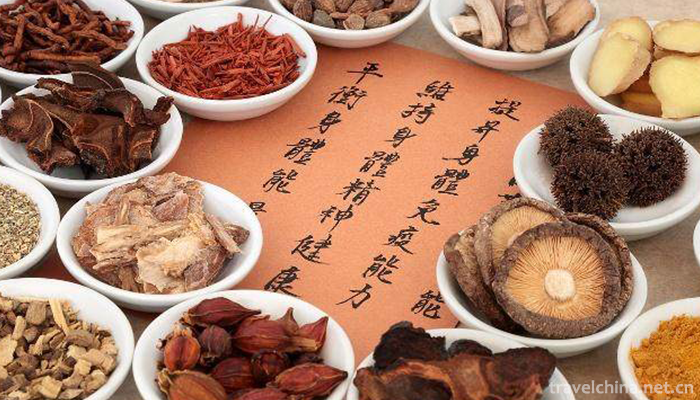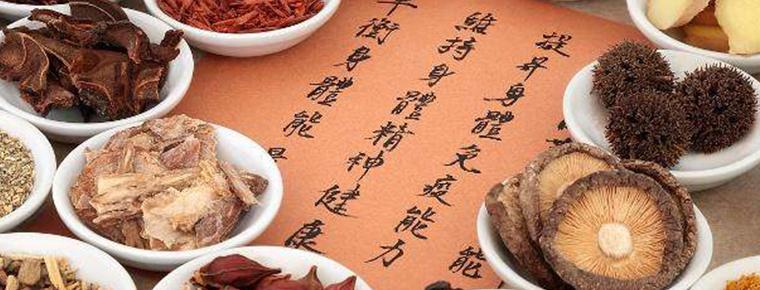Traditional Chinese Medicine Culture
Traditional Chinese Medicine Culture
Traditional Chinese medicine (TCM) is the oldest and most complete medical system in the world. It is not only a method of treating diseases, but also a complete philosophy of the universe and life.
Looking back on the long history of traditional Chinese medicine culture, it has a long history and rich treasures. For thousands of years, every bit of progress has shown the wisdom of our people in the struggle against disease.
Quickly turn over the historical development of traditional Chinese medicine culture:
From the beginning of primitive society, medicine was groping forward in the dark. During the Zhou Dynasty, doctors and witches separated. Full-time doctors and medical branches emerged, medical evaluation system was established, and the witch team itself was divided. The creation of Decoction in Shang Dynasty left behind a medical allusion of "getting sick into plaster" for later generations.
During the Qin Dynasty, the theory of six Qis causing disease and five elements of Yin and Yang was initially formed. The dialectical principles of principle, method, prescription and medicine established by Zhang Zhongjing, the medical sage, laid a foundation for the clinical science of traditional Chinese medicine.
During the Wei, Jin and Southern and Northern Dynasties, Wang Shu and his edition of Treatise on Febrile Diseases and Maijing, Sun Simiao's Prepare for Emergency and Thousand Golden Wings, etc., made systematic and incisive expositions from basic theory, clinical disciplines to health care, which occupied an important position in the history of medicine.
Subsequently, the New Materia Medica compiled by the Tang government was not only the first Chinese medicinal herb issued by the government, but also the earliest pharmacopoeia in the world. At that time, surgery, gynecology, pediatrics, traumatology and other departments have formed independent specialties, and a large-scale government-run medical college, Taiyuan Medical Department, emerged.
During the Jin and Yuan Dynasties, Ming Dynasty, Qing Dynasty, Republic of China and so on, there are many other historical periods in which great achievements in the development and progress of Chinese medicine have been made. Xiaobian can't talk to you for a year.
Chinese culture is extensive and profound, and famous doctors with outstanding reputation will appear in every historical period. By means of watching, hearing, asking, and treating according to syndrome differentiation, they will establish their professional status in the field of traditional Chinese medicine.
In ancient times, Zhang Zhongjing honey was used to treat constipation.
When Zhang Zhongjing was young, he studied medicine with his fellow countryman, Zhang Bozu. Because of his intelligence, broad-mindedness and miscellaneous income, he grew rapidly.
One day, a patient with burnt lips, dry mouth, high fever and mental retardation was brought in. Teacher Zhang Bozu, after diagnosis, considered that it was caused by "heat evil injuring Jin, body deficiency and constipation". He needed laxative to help the patient to relieve dry stool, but the patient's constitution was extremely deficient and the patient could not stand it with strong laxative. Zhang Bozu meditated half loudly, and for a moment he lost his opinion.
Standing aside, Zhang Zhongjing saw that the teacher was helpless and began to think. Suddenly, a firm and confident look flashed across his eyebrows. He stepped forward and said to his teacher, "Students have a way!" He talked about his ideas in detail. Uncle Zhang listened and his frown began to relax.
Zhang Zhongjing took a spoonful of yellow orange honey and put it in a copper bowl. He burned it in a slight fire and kept stirring it with bamboo chopsticks, gradually boiling the honey into a sticky mass. When it was slightly cold, Zhang Zhongjing pinched it into a slightly pointed strip shape, and then gently pushed the pointed head forward into the patient's anus. After a while, the patient pulled out a large pile of stinky feces, and his condition was half better.
The patient recovered in a few days because the heat evil was discharged with feces. Zhang Bozu greatly appreciated this method of treatment and praised it when he met people. This is actually the earliest drug enema in the world.
Later, when Zhang Zhongjing summarized his treatment experience and wrote "Typhoid and Miscellaneous Diseases", he included this treatment method in the book, named "Honey Decoction Guide", which was used to treat the symptoms of excessive deficiency of body fluid and hard stool, and was highly praised by later generations.
Gu Youqian Yiloess for nephropathy:
Qian Yi was a well-known pediatrician in Song Dynasty. He was the author of The Straight Tips of Pediatric Pharmaceutical Certificate. People respected him as "the sage of pediatrics".
One day, Emperor Shenzong of Song Dynasty suddenly got sick. He invited many famous doctors to treat him. His condition became worse and worse. Finally, he began to cramp. The emperor was very anxious to see what he was like.
At this time, someone recommended Qian Yi to the emperor. So Qian Yi was called into the palace. The emperor looked down upon him when he saw that he was thin and unattractive, but since he had been called in, he had to consult his son. Qian Yi took a leisurely look at it and wrote a prescription for "loess soup" after going through pen and paper.
When the doubtful Sung Shenzong took the prescription, he saw that the medicine on it was actually loess. He was furious and said, "You are so wild! Can loess also be used as medicine?
Qian Yixiong answered, "According to my judgment, the disease of the prince is in the kidney, which belongs to the water of the north. According to the five elements principle of traditional Chinese medicine, Tuneng Keshui, so loess should be used for this disease."
When Song Zong saw that he spoke in a correct way, his doubts were gone. Then the prince began to cramp again, and the queen urged him, "Qian Yi is quite famous in Beijing. His diagnosis is very accurate. The emperor will not worry about it." So the emperor ordered people to take out a piece of roasted loess from the stove and put it in a cloth bag and decoct it with medicine. After the prince took it, the cramp stopped quickly. After two doses, the disease was cured as before. At this time, Song Shenzongcai really believed in Qian Yi's technology and promoted him from a doctor in Hanlin to a doctor with high honor.
Inheritance and Continuation of Traditional Chinese Medicine Culture
Perhaps the magic of traditional Chinese medicine lies in this. Nowadays, we should awaken, carry forward and inherit the traditional Chinese medicine culture. As Li Shizhen said, "Anyone who takes soup medicine, although the goods are specialist and the treatment is the same, but the decoctor recklessly drinks, the water and fire are bad, the fire is not enough, the medicine is also ineffective."
Traditional Chinese medicine decoction, which can give full play to its efficacy, has been praised and continued for generations by doctors, and has become one of the important dosage forms of traditional Chinese medicine. Among the endless fragrance of medicine, Dongjitang not only gathers the Mingjia of traditional Chinese medicine, but also makes elaborate authentic medicinal materials prepared by ancient methods. Pharmacist weighs, grabs medicine, examines prescription, dispenses medicine, prosecution, two examinations, three examinations before packing. Pan-fried, first fried, another fried, different packaging, respectively.
Traditional manual decoction, never for the people who decoct, one side, on behalf of the guests decoction, repair, although nobody see, consciously know. Each herb is decocted twice by a professional decoctor, using traditional manual method. The order, time and temperature of decoction are carefully arranged. Because only the proper decoction method can give full play to the efficacy of the prescription.
Across the glass, every move in the pharmacy was in the eye. The process of decocting medicine is bright, so is the heart of people who take medicine. Here, dedicated and dedicated Dongjitang people, day after day, sow hope, convey warmth, exquisite craftsmanship, watch medicine soul. The harmony of heaven and man is the best. I think this is the realm of traditional Chinese medicine culture. Let traditional Chinese medicine change life, inherit the essence of traditional Chinese medicine, Dongjitang, has been continuing!


-
1.Jinsi Gorge Scenic Area
Jinsi Gorge Scenic Area of Shangluo City, Shaanxi Province, is located in the hinterland of Xinkailing in the southeast of Shangnan County, Shangluo City.
Time 2018-12-12 -
2.Shihuadong National Geological Park
Beijing Shihuadong National Geopark is located in Cheying Village, Nancheng Town, Hebei Province, Fangshan District, Beijing. It is a seven-storey karst cave 55 kilometers away from Beijing
Time 2019-02-08 -
3.Three Old People of Korean Nationality
Three Koreans are the traditional folk opera form of the Korean nationality in China. It is composed of three actors who perform in the role of the elderly and merge the forms of Korean opera singing
Time 2019-04-16 -
4.Kazakh Kubuzi
Kubuzi is the representative of Kazakh's playing instruments. Chinese is also translated into Hobbes, Hobbes, Kibbs and so on. Kubuzi structure is simple and beautiful, used for solo, ensemble or acco
Time 2019-05-02 -
5.Cutting Copper Dus Cutting Copper
Painting inscriptions on bronze pots, smooth lines; beautiful paintings of mountains and rivers on bronze plates, such as immersion... In many people's eyes, Du's bronze engraving,
Time 2019-05-09 -
6.Ma Street book fair
The Majie Book Club is a grand Chinese folk music festival. Located 5 kilometers south of Baofeng County, Henan Province, it is a "pilgrimage site" for rap artists all over the country. Ever
Time 2019-05-15 -
7.Printing and Dyeing Techniques of Nantong Blue Printing Cloth
Nantong Blue Printing and Dyeing Technology, one of the local traditional printing and dyeing techniques in Nantong City, Jiangsu Province, is one of the national intangible cultural heritage.
Time 2019-06-07 -
8.Suzhou embroidery
Suzhou embroidery is the general name of embroidery products in Suzhou area. Its origin is in Wuxian, Suzhou. Now it has spread all over Wuxi, Changzhou and other places. Embroidery and silkworm reari
Time 2019-06-17 -
9.Forging Skill of Iron Painting in Wuhu
Iron painting originated in the Song Dynasty and prevailed in the Northern Song Dynasty. During the reign of Kangxi in the Qing Dynasty, iron paintings in Wuhu, Anhui Province, became self-contained a
Time 2019-06-29 -
10.Yidege Ink Making Skills
Yidege is a local traditional handicraft in Beijing. It is well-known for producing ink. The products have bright ink, rich and light colors, fluent writing, moderate concentration, strong fragrance,
Time 2019-07-11 -
11.Sports in Luzhou
By the end of 2017, there were 1654 fitness facilities and venues in Luzhou City, and 1.093 million person times of physical exercise were opened free of charge in the whole year. Six municipal level competitions including track and field, football (spring League), badminton
Time 2020-12-14 -
12.Guangan Railway
Guang'an has five passenger railway stations (Guang'an station, Guang'an south station, Yuechi station, Huaying station and wusheng station). Among them, Guang'an station is an important material and passenger distribution center in eastern Sic
Time 2020-12-19